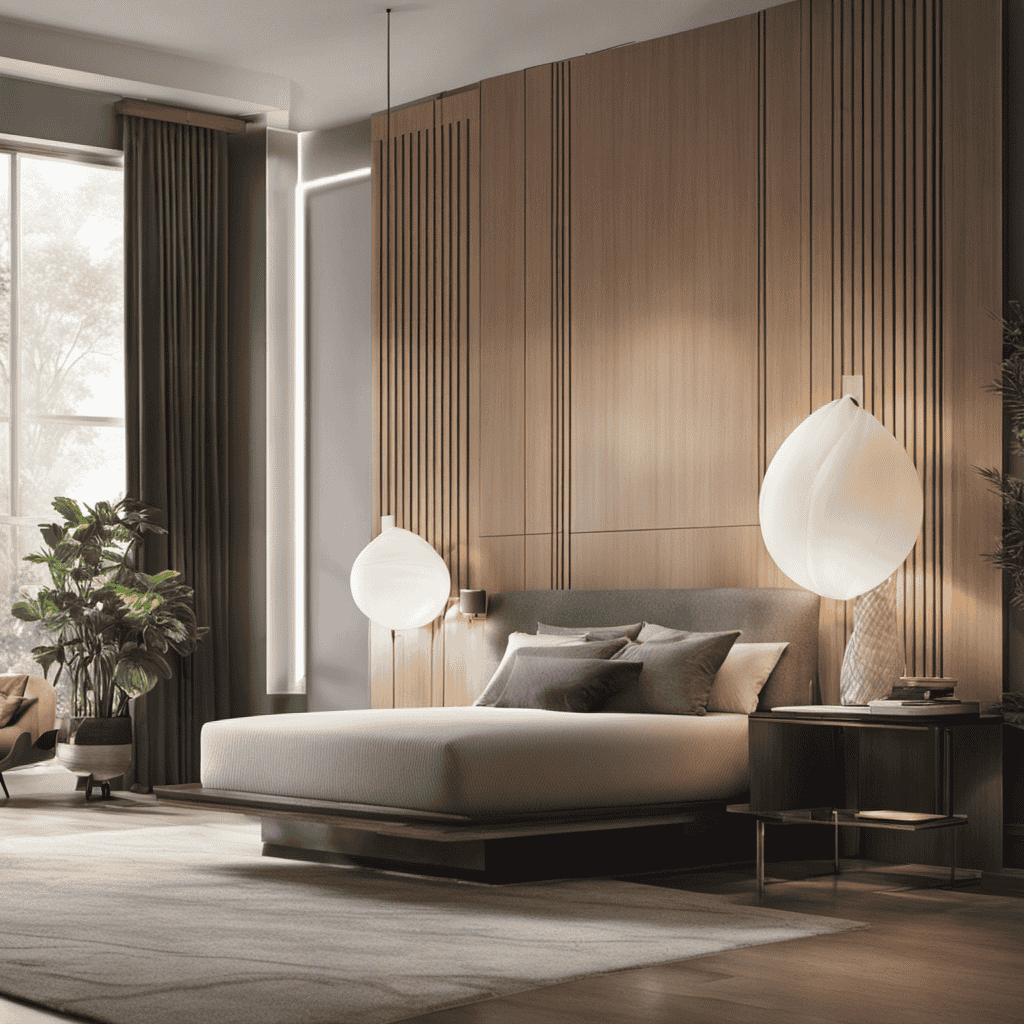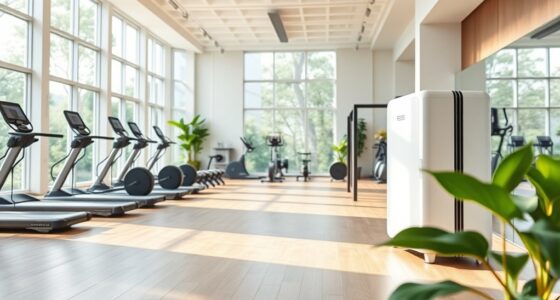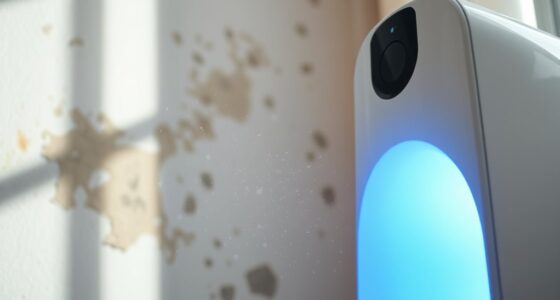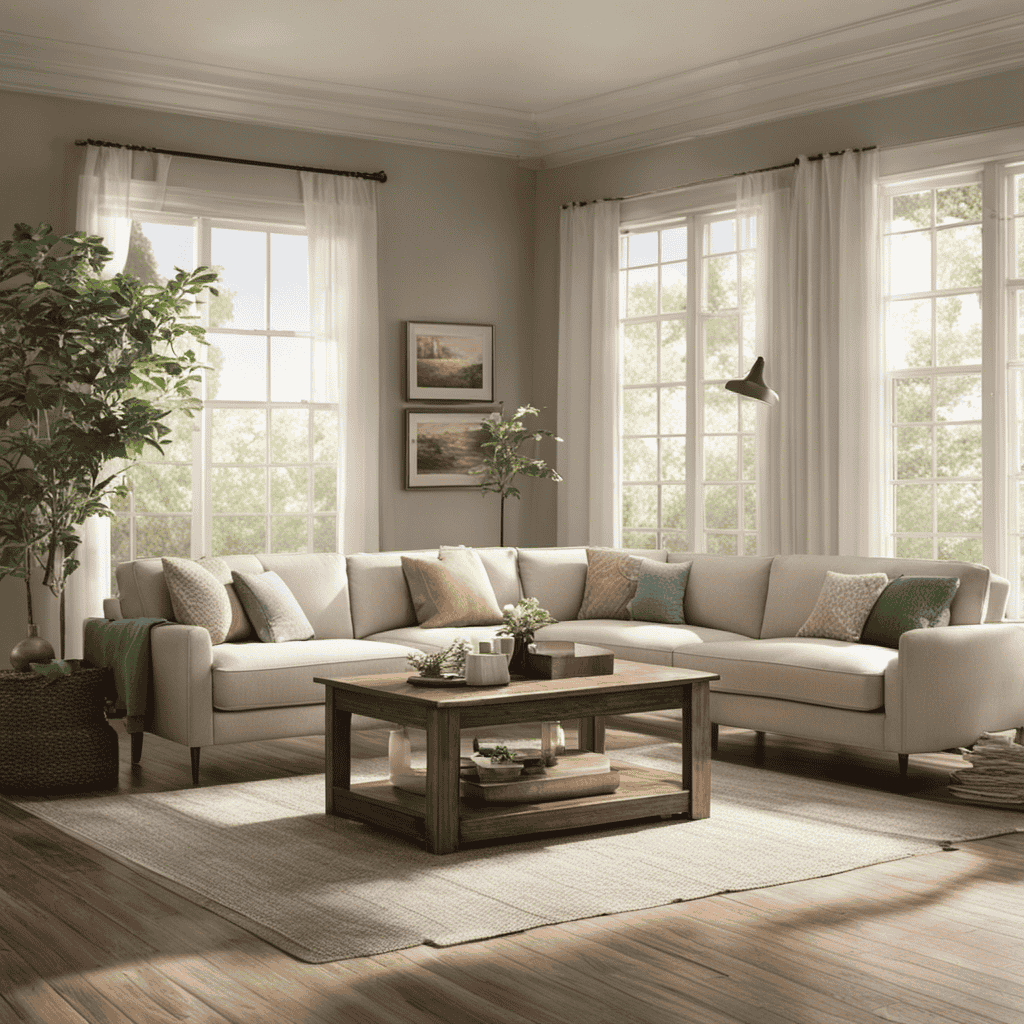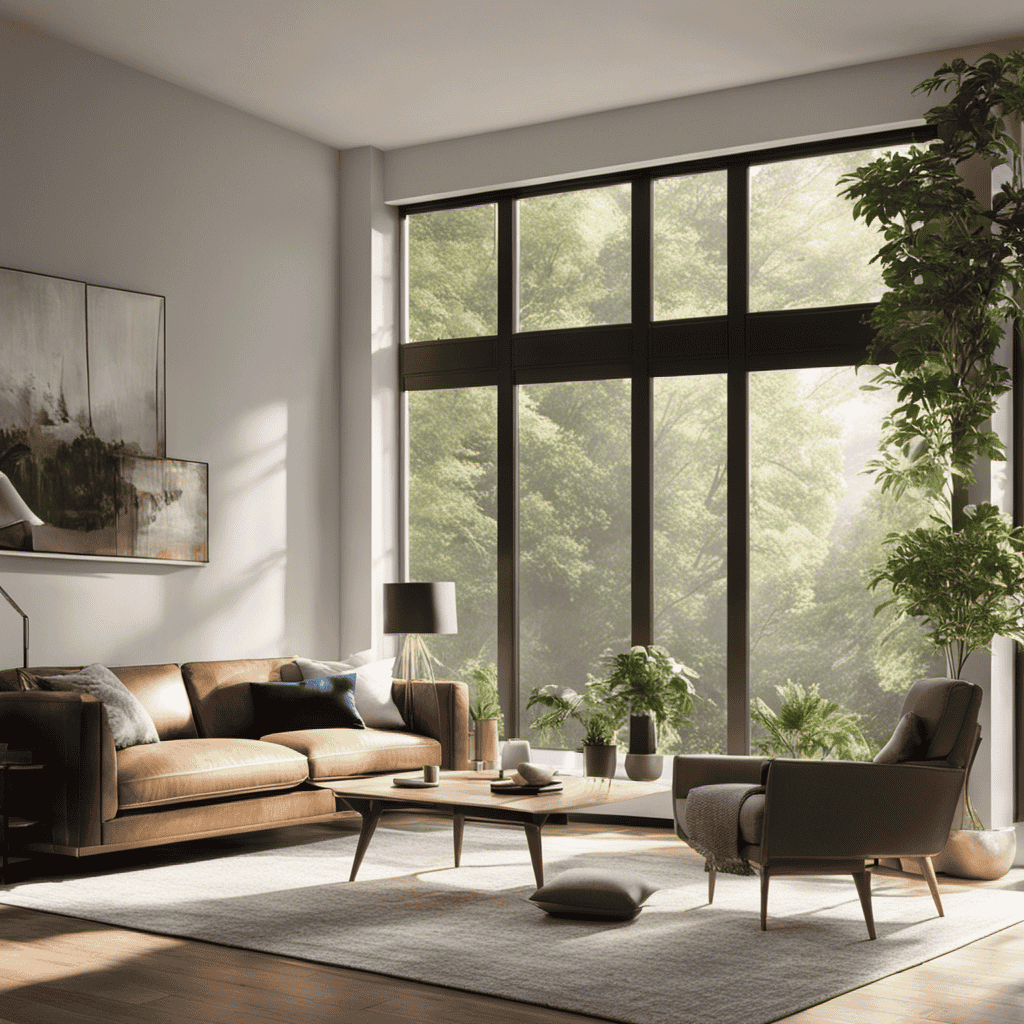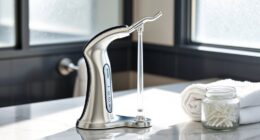I have always been curious about the functioning of air purifiers. Therefore, I took the initiative to explore mechanical videos to understand the process better.
What I discovered was a fascinating process that combines filtration, HEPA filters, activated carbon filters, ionization, and a fan and ventilation system.
In this article, we’ll explore each of these components in detail and uncover the inner workings of air purifiers.
Get ready to be amazed at how these devices clean the air around us.
Key Takeaways
- Air purifiers use advanced technology to efficiently filter out various air pollutants.
- HEPA filters in air purifiers trap microscopic particles like dust, pollen, pet dander, bacteria, and viruses, reducing the risk of allergies and respiratory problems.
- Activated carbon filters in air purifiers absorb and neutralize odors and VOCs, improving indoor air quality and reducing respiratory problems.
- The ionization process in air purifiers uses ions to remove pollutants by attaching to airborne particles, making them heavier and causing them to settle or stick to surfaces.
Filtration Process in Air Purifiers
The filtration process in air purifiers helps to remove contaminants from the air. Air purifiers utilize advanced technology to efficiently filter out various types of air pollutants. These pollutants can include dust, pollen, pet dander, mold spores, smoke particles, and volatile organic compounds (VOCs).
The air purifier technology typically consists of multiple filters, such as a pre-filter, HEPA filter, and activated carbon filter. The pre-filter captures larger particles like dust and pet hair, while the HEPA filter effectively traps microscopic particles like pollen and mold spores. The activated carbon filter then adsorbs odors and VOCs.
As air passes through these filters, the contaminants are trapped, allowing only clean and purified air to be released back into the environment. This filtration process ensures that the air you breathe is free from harmful pollutants, promoting a healthier living space.
Importance of HEPA Filters in Air Purifiers
You may not realize it, but HEPA filters are crucial in keeping the air in your home clean and free from pollutants. These high-efficiency particulate air filters work by trapping microscopic particles, such as dust, pollen, pet dander, and even bacteria and viruses, ensuring that the air you breathe is of the highest quality.
Here are two key benefits of HEPA filters:
-
Effective Filtration: HEPA filters can capture up to 99.97% of airborne pollutants as small as 0.3 microns in size. This includes common allergens like mold spores and fine particles that can trigger respiratory issues.
-
Improved Health: By removing harmful contaminants from the air, HEPA filters can significantly reduce the risk of allergies, asthma attacks, and other respiratory problems. Breathing cleaner air can lead to better overall health and well-being.
With this understanding of the importance of HEPA filters, let’s now explore the role of activated carbon filters in air purifiers.
Role of Activated Carbon Filters in Air Purifiers
Activated carbon filters, also known as charcoal filters, are essential components in air purifiers. They effectively absorb and neutralize various odors and volatile organic compounds present in indoor air. These filters are made from activated carbon, a highly porous form of carbon treated to increase its surface area and enhance its adsorption capabilities.
The effectiveness of activated carbon filters lies in their ability to trap and retain airborne pollutants through a process called adsorption. When air passes through the filter, the activated carbon molecules attract and bind to the contaminants, effectively removing them from the air. This process not only helps eliminate unpleasant odors but also reduces the levels of harmful substances such as formaldehyde, benzene, and toluene.
The benefits of using activated carbon filters in air purifiers are significant. They include improved indoor air quality, reduction in respiratory problems, and a fresher, cleaner living environment.
Understanding the Ionization Process in Air Purifiers
To understand the ionization process in air purifiers, it’s important to know that ions are electrically charged particles that can be positively or negatively charged. In air purifiers, negative ions are often used to remove pollutants from the air.
Here’s how the ionization process works:
- Negative ions are generated by a built-in ionizer in the air purifier.
- These negative ions attach themselves to airborne particles such as dust, pollen, and pet dander.
- This process makes the particles heavier and causes them to settle down or stick to surfaces.
- Alternatively, electrostatic precipitators can be used to attract and collect these negatively charged particles.
- The air purifier’s fan then circulates the purified air back into the room.
Understanding the ionization process is crucial in comprehending how air purifiers effectively eliminate pollutants.
Now, let’s explore the fan and ventilation system in air purifiers to further understand their functioning.
Exploring the Fan and Ventilation System in Air Purifiers
The fan and ventilation system in air purifiers help to circulate the purified air throughout the room. This crucial component plays a vital role in ensuring efficient air purification. By utilizing advanced fan technology, air purifiers are able to generate a powerful airflow that effectively moves the purified air. The fan draws in the surrounding air, passing it through various filters to remove contaminants and pollutants. Once purified, the air is then pushed back out into the room through the ventilation system. This continuous circulation of clean air helps to maintain a healthy and fresh environment. The airflow direction is carefully designed to optimize the distribution of purified air, ensuring that every corner of the room receives the benefits of clean and pollutant-free air.
| Column 1 | Column 2 | Column 3 |
|---|---|---|
| Fan Technology | Airflow Direction | Benefits |
| Advanced | Optimized | Efficient |
| Powerful | Strategic | Healthy |
Frequently Asked Questions
Can an Air Purifier Remove All Types of Pollutants From the Air?
Yes, an air purifier can effectively remove various types of pollutants from the air. It utilizes a filtration system to capture particles such as dust, pollen, pet dander, smoke, and even certain odors, improving the overall air quality.
How Long Does a HEPA Filter Last and When Should It Be Replaced?
The lifespan of a HEPA filter depends on various factors such as usage and air quality. Generally, it should be replaced every 6 to 12 months. Regularly monitoring the filter’s condition is crucial to ensure optimal air purification efficiency.
Are There Any Health Risks Associated With Using an Air Purifier?
There are potential health risks associated with using an air purifier, especially in homes with children or pets. The impact on indoor air quality and respiratory health, particularly for individuals with allergies or asthma, should be considered.
Is It Necessary to Use Both a HEPA Filter and an Activated Carbon Filter in an Air Purifier?
Using both a HEPA filter and an activated carbon filter in an air purifier is necessary. The HEPA filter efficiently removes particles, while the activated carbon filter effectively eliminates odors and harmful gases.
How Often Should the Fan and Ventilation System in an Air Purifier Be Cleaned or Maintained?
The fan and ventilation system in an air purifier should be cleaned and maintained regularly to ensure optimal performance. Cleaning frequency and maintenance requirements depend on factors such as usage, environment, and specific model specifications.
Conclusion
In conclusion, understanding how air purifiers work is crucial for maintaining a clean and healthy indoor environment.
Through the filtration process, HEPA filters play a vital role in trapping airborne particles, while activated carbon filters remove odors and harmful gases.
The ionization process further enhances air purification by neutralizing pollutants.
Additionally, the fan and ventilation system ensure proper circulation of purified air throughout the room.
By grasping these mechanisms, we can make informed decisions when choosing an air purifier and take control of the air we breathe.

